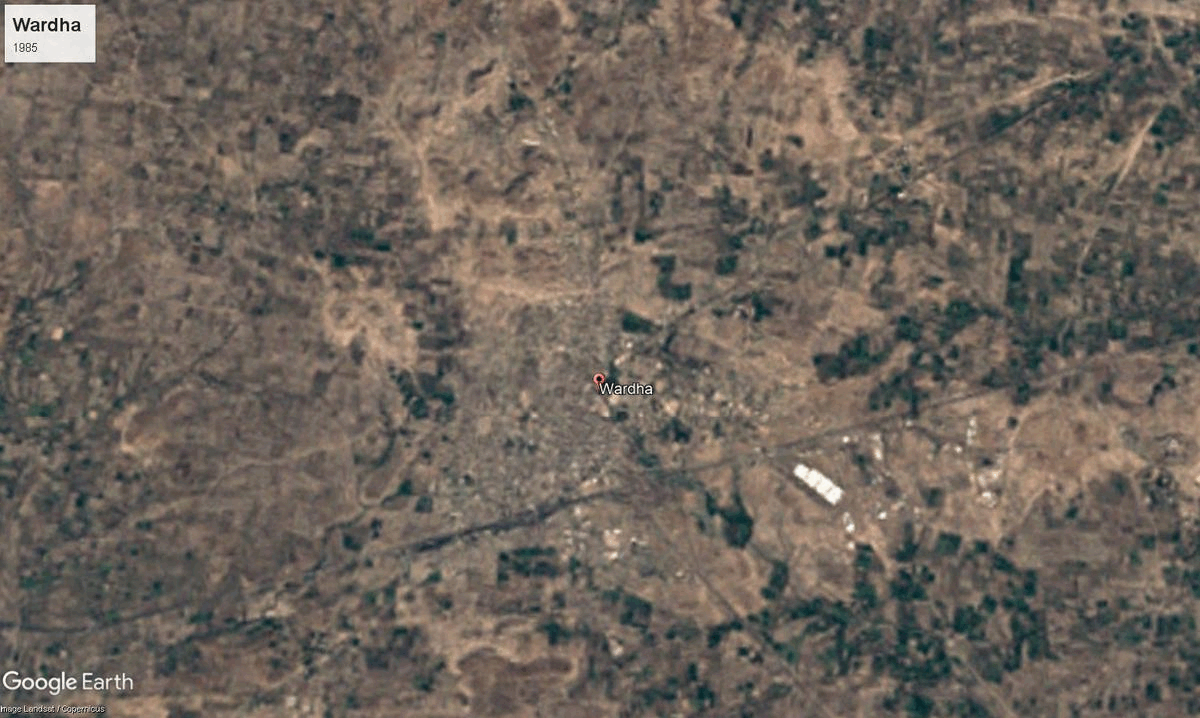Wardha

6,310 sq. km
~14.04 lakh (2019)
946 (2011)
~ ₹18,814 crore (2019)
~ ₹1.34 lakh (2019)
Wardha district, located in eastern Maharashtra’s Vidarbha region, and is known for its historic, cultural, and political legacy. The name "Wardha" is believed to have originated from the Wardha River, which flows through the district. Some sources link it to the Sanskrit word 'Vardhayati', meaning "to grow" or "to increase." However, its exact origin remains uncertain, with multiple local interpretations. Wardha district’s history dates back to ancient times, having been part of the Mauryas, Shunga, Satavahanas, and Vakataka empires. Pravarpur, now modern-day Pavnar, served as the capital of the Vakataka dynasty. Over the centuries, the region was ruled by the Chalukyas, Rashtrakutas, Yadavas, Delhi Sultanate, Bahmani Sultanate, Muslim rulers of Berar, Gonds, and Marathas. During British rule, Wardha district was officially established on 1 July 1 1862, after being separated from Nagpur district. Today, it shares borders with Nagpur, Amravati, Yavatmal, and Chandrapur districts. The district is divided into eight tehsils: Wardha, Deoli, Seloo, Arvi, Ashti, Karanja, Hinganghat, and Samudrapur.
Wardha is synonymous with India’s independence movement. It is home to Sevagram Ashram—where Mahatma Gandhi lived from 1936 to 1948—and saw landmark meetings of the Indian National Congress and the rise of Vinoba Bhave’s Bhoodan Movement from nearby Pawnar. Gandhi’s presence shaped the district’s ethos, attracting luminaries like Jamnalal Bajaj and fostering institutions such as the Mahatma Gandhi Institute of Medical Sciences and the Mahatma Gandhi Antarrashtriya Hindi Vishwavidyalaya. The district features unique places like Gitai Mandir, dedicated to the Bhagavad Gita (perhaps unique in the world), and Vishwa Shanti Stupa (Peace Pagoda). Wardha is also home to Hindu, Jain, Buddhist, Sikh, and Christian holy sites, with religious harmony as a local hallmark. Wardha is also home to historically and culturally significant places, such as The Chilla Palace, Paunar Fort Tomb, Panchadhara Mandir, and Bor Wildlife Sanctuary, known for its diverse flora and fauna.
Wardha is part of the fertile plains of Vidarbha, with rich black soils, cotton fields, and gently undulating terrain. The region receives moderate rainfall and is shaped by the Wardha, Dham, Kar, and Bor rivers, which are critical for irrigation. It encompasses forests, wildlife sanctuaries (near Bor Tiger Reserve), and ancient sites like Kelzar Ganpati, referenced in the Mahabharata. Rural areas host sites of archaeological and religious importance, including ancient temples, caves, and ashrams dotting the district’s landscape.
Wardha is anchored in agriculture—especially cotton, soybean, and chickpea production. Historically important in India’s cotton trade, Wardha today is also recognized for Waigaon turmeric, which received a Geographical Indication (GI) tag in 2016 for its unique qualities. In recent decades, Wardha has become Vidarbha’s major industrial hub with textile, engineering, and steel plants, along with emerging IT and service sectors. Cooperative movements in the district are also often said to be prominent.
